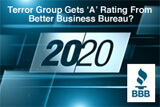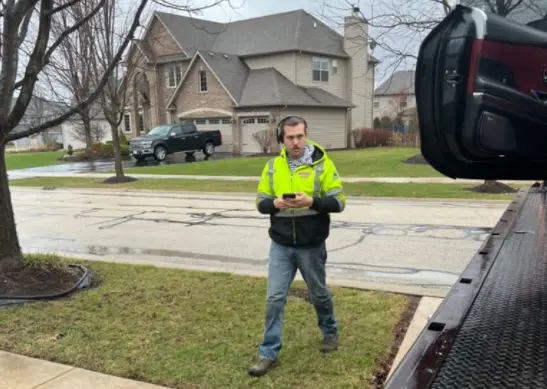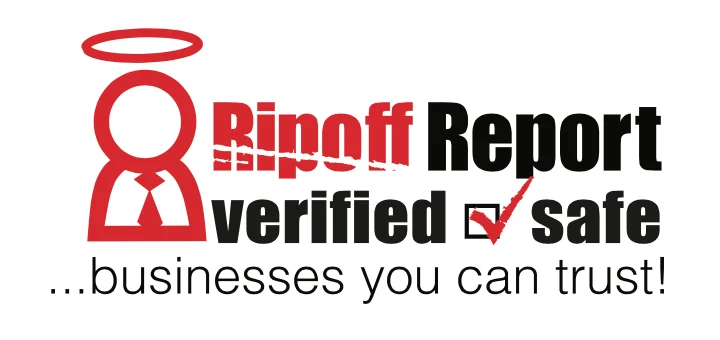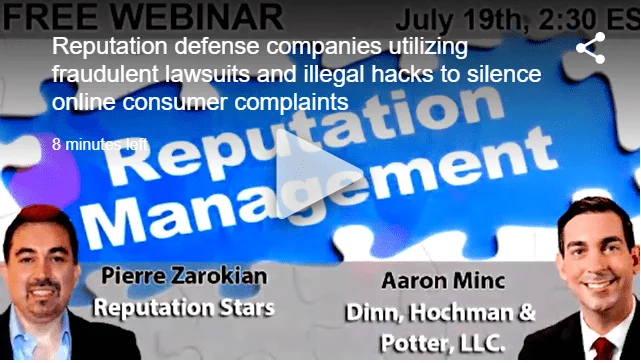Complaint Review: Astoria Financial Corporation - Lake Success New York
- Astoria Financial Corporation One Astoria Federal Plaza, Lake Success, NY 11042 Lake Success, New York USA
- Phone: (516) 327-3000
- Web: http://ir.astoriafederal.com/phoeni...
- Category: Mortgage Companies
Astoria Financial Corporation mortgage enforceable interest-only-mortgage insider-trading foreclosure-crisis non-traditional-mortgage Lake Success New York
listed on other sites?
Those sites steal
Ripoff Report's
content.
We can get those
removed for you!
Find out more here.
Ripoff Report
willing to make a
commitment to
customer satisfaction
Click here now..
Is your mortgage enforceable?
My wife and I came to the conclusion that many of the loans that arose between 2005 and today are likely to be unenforceable for a number of reasons. While this may be true as a factual and legal matter, finding any regulatory agency, newspaper, or other interest group willing to stand toe to toe with the ubber large financial institutions is very uncommon.
Although the application of our analysis has prevailed in the context of many cases between big companies, we found little in the way of cases applying this straight forward analysis to protect consumers like you and me. Worse, we found that the court system is very slow (even though the lender is the one who brings the foreclosure action), and no one really wants to raise these issues on our behalf. As a consequence, this report seeks to answer two questions.
- First, why are many (if not most) mortgages not enforceable?
- Second, why are the so called consumer advocate lawyers and other government funded agencies that were created to protect consumers (and largely funded by grants or other sources of funding from the government) not actually protecting American consumers by making the best legal and factual arguments? Why are newspapers and other American icons of civil rights not raising issues that demand investigation into the securities activities of the financial institutions’ top executives during the subprime mortgage scandal, the recent recession and the mortgage foreclosure crisis? Why are there no published forensic economic investigation reports readily available to the public that reveal the names of those who made money during these crisis?
As to the first question: why are many (if not most) mortgages not enforceable?, the simple answer is that the respective directors and executives of such regulated mortgage lending institutions (which in our case is Astoria Federal Savings and Loan Association (also known as Astoria Federal Mortgage Corp.)):
(1) knew long before (a) regulations became law that such regulations were going to become law, and (b) the residential real estate market collapsed that it was going to collapse,
(2) were required to and did perform sophisticated projections of the exact effect existing and impending regulations were going to have on their regulated lending institutions, their depositors, shareholders, and customers,
(3) utilized such sophisticated projections to generate personal gains of millions of dollars, rather than reduce prohibited or unsound lending practices, and
(4) are now trying to enforce the unsound/unlawful loans upon far less sophisticated consumers (even though such executives and directors know that such unsafe loans are not enforceable).
Utilizing our particular experience, let us explain how this operates in the real world without it being obvious to less sophisticated trusting consumers.
My wife and I found ourselves unable to pay the full mortgage payment coming due each month. As you review this report, please keep in mind that (a) this follows the 2008 mortgage foreclosure crisis and other major economic catastrophes which have occurred in the United States, (b) this is a first for us during our very long lifetimes, (c) we are in strict compliance with all of our other credit relationships (that is, we have not defaulted on any other indebtedness), and (d) like many other Americans, our home had lost more than 50% of its value (without any fault on our part but rather as a result of a problem caused by financial institutions seeking increased earnings year after year regardless of how such earnings are generated or from whom such earning derive) – caused us to be unable to repay the mortgage from the sale or refinancing of our home.
When we applied for the mortgage Astoria Federal Mortgage Corp. was required by law to base the decision of whether or not to make the loan based upon our income assuming that such income was the sole source of repayment to maturity. We were not aware of this requirement. Our income was not sufficient to repay our mortgage in full to the final maturity of the loan. It was clear from our application that we would not be able to repay the loan to maturity based solely on our income. Therefore, the loan should not have been made. This was true when we applied and it was understood by the lender – in fact, the lender was required to make such analysis. It simply did not make the required analysis.
Moreover, based also upon (i) the requirement that Astoria Federal Mortgage Corp was to make sophisticated projections of the effect regulations (existing and proposed) would have upon us and others together with (ii) the fact that instead our lender aggressively pursued what has become known as non-traditional interest only mortgages, our research reveals that our lender knew that (a) real estate values were going to drop and (b) in fact it was highly unlikely that we would be available to repay our mortgage, whether from the sale of our home or the refinancing of our home. At the time our loan was made, we had a very large equity in our home such that it looked to us like a traditional mortgage even though it was interest only for the first 10 years. However, this was all an illusion conjured up by the lender because the lender knew that the foreclosure crisis was going to occur (but we did not) and in fact, the lender should have denied our application. The lender knowingly trapped us in a lending relationship it knew we would not be able to honor.
Crazy – right?
However, when you look at the behavior of those in control of the lender and their economic incentive to make a loan that could not be honored, it becomes easier to understand what was going on and why mortgages entered into under these circumstances are not enforceable (that is, as long as American consumers receive equal protection of the law like big businesses get). We believed that we could honor the loan upon resale of our home, but unlike us, the lender knew that this was not going to be true in a short period of time that was long enough for them to generate millions of dollars of personal profit from trading on the very same sophisticated projections they were required to make. Had they properly utilized such projections, the lender would have denied our loan application and we would not be in the dire circumstances in which we now find ourselves.
We tried to work things out with our mortgage lender – Astoria Federal Savings and Loan Association (also known as Astoria Federal Mortgage Corp.). The lender and its servicer – engaged in delay, deception, and many other things that have no place in a conversation initiated to resolve a problem created by the mortgage and loan industry.
We complained to the Better Business Bureau, the Illinois Attorney General, the Consumer Financial Protection Bureau, the Office of Thrift Supervision, the Office of the Comptroller of the Currency, and etc. Not a single entity asserted that we were incorrect in our analysis. Nonetheless, no one offered any assistance.
Eventually Astoria Federal (a subsidiary of Astoria Financial Corporation) sued to foreclose on our home.
After learning that our government and purported consumer protection agencies completely failed to offer any assistance and the lender having sued to foreclose on our home, we had no choice but to figure out how we came to be in this mess. This was no small task. The laws regulating mortgage lending and mortgage lenders are voluminous and difficult to understand. Nonetheless, we researched the factual history and the relevant laws. Here is what we learned based upon our careful research.
The directors and officers of Astoria Financial Corporation (the parent holding company of the mortgage lender) actively traded their own stock based on forewarning by Federal regulators that regulations similar to those put in place for subprime mortgages were going to be implemented in the context of non-traditional mortgages. In anticipation of such regulations the directors and officers of Astoria Financial actively traded their own stock in a manner inconsistent with their origination of increased volumes of non-traditional mortgages (e.g., interest only mortgages). Moreover, they issued options to themselves pursuant to which they could purchase shares of stock at a fraction of the market value, thereby ensuring that they would make a profit through a quick resale. Moreover, the amount of the profit they could make would be increased by masking the inevitable crisis that occurred in 2008 (even though their analysis projected it), by originating increased volume that gave the false appearance that originating increased volumes of non-traditional mortgages was profitable. This they did until the foreclosure crisis did in fact occur. That is, up and until they actually had to recognize that the resale values of the homes that had become subject to their non-compliant non-traditional mortgages would not support repayment, the executives and directors of the lender’s parent holding company continued to personally gain by issuing stock options to themselves and then selling the optioned shares into the market at a higher price.
Although the law (including regulations that became effective before our loan was made) required them to do otherwise, the lender’s underwriting (i) did not fully load all interest and principle to be paid to maturity and (ii) did not verify that we could actually repay such principle without having to sell or refinance the property. Astoria Federal Savings and Loan Association (also known as Astoria Federal Mortgage Corp.) did not have the legal authority to make the subject loan to us because we did not have the capacity to repay the mortgage without relying upon the resale or refinancing of our home. As a direct consequence, Astoria Federal Savings and Loan Association (also known as Astoria Federal Mortgage Corp.) made a loan that it knew would end up in default and for which there was no means of remedying such default.
From 2005 (that is, 2 years before such regulations became effective) through 2008 (that is, for as long as they could still personally profit therefrom without the general public becoming aware of the fact that the loans could not be repaid due to materially reduced market values), the executive officers and directors of Astoria Financial Corporation (the parent holding company of Astoria Federal Savings and Loan Association (also known as Astoria Federal Mortgage Corp.)) sold their shares in Astoria Financial for personal gain nearing $17,000,000. This placed the assets of other shareholders, depositors, borrowers such as us and the FDIC insurance fund at risk of substantial loss – gambling the assets of others for the chance of huge personal profit by making loans that they did not have corporate/legal authority to make.
This analysis is based on insider trading information provided at http://www.insider-monitor.com/trading/cik910322.html. As the Office of Thrift Supervision and the Office of the Comptroller of the Currency contemplated in 2005 and after the OTS and the OCC proposed the OTS 2006 Guidance at the end of December 2005, the management of Astoria Financial Corporation (which is the parent holding company of the lender) made over $4,510,019 in 2005 alone in anticipation of such proposed OTS 2006 Guidance, over$8,187,781 in 2006 alone (the year in which such proposed regulations became law), and a total of $16,972,571 through 2008. They did this by selling shares they already owned as well as by exercising their respective stock options (which they authorized to be issued to each other) to purchase Astoria Financial Corporation stock at stock option exercise prices that were lower than the market price and then promptly selling into the market at higher market prices the very same shares they had just purchased upon exercising their options.
Let’s look at how unusual this was. At no time in 2003, 2004 or 2005 did such management engage in any similar exercise of stock options. During this period they held onto the shares they already owned, presumably because they expected that such shares would be worth more at some later point in time. In fact following the OTS’ and OCC’s solicitation of comment on the OTS 2006 Guidance, January 2006 marked the first insider trading transaction involving their use of stock options. The OTS and OCC announce on December 20, 2005 (see http://www.occ.gov/static/news-issuances/ots/press-releases/ots-pr-2005-50.pdf), and made effective in substantially the same formed as proposed (see http://www.occ.gov/static/news-issuances/ots/press-releases/ots-pr-2006-46.pdf ) the OTS 2006 Guidance, thereby placing very restrictive constraints on the offering and sale of non-traditional mortgages, including interest only mortgages.
Here is a tabular summary of the profits that the officers and directors of Astoria Financial derived solely from such insider trading activities, which does not include salaries, bonuses, retirement plan contributions, golden parachute provisions, or other forms of executive compensation. The following is a summary of the profit they personally received from such insider trading:
[SEE ATTACHED PHOTO]
Such executive stock options served to grant management lower than market prices upon which once exercised, they could purchase shares and then turn around and promptly sell the option share into the market at a considerably higher price.
Moreover, this could be repeated over and over again so long as such management could perpetuate the illusion that they were running the company in a profitable manner. Such management had to continue to generate high volumes of what would appear to be highly profitable non-traditional mortgages, even if such management knew that such mortgages would not meet the proposed requirements, and after October 4, 2006, even if newly originated interest only, non-traditional mortgages in fact did not meet the requirements of the then effective OTS 2006 Guidance.
As a practical matter, executives would only sell their shares in the company they operated if they expected the share price to go down. Otherwise, they would have held on to such shares and sold them in the future at higher prices; this is particularly true if they expected that the company was going to make more money from their increased efforts to originate larger volumes of non-traditional mortgages. That is, if the executives of Astoria Financial expected that the newly originated increasing level of non-traditional mortgages (see table, below) was going to make the company more profitable, they would have held onto their shares in order to make more money.
What is particularly informative is the fact that if they expected the new regulations to have adverse consequences on the share price, this would lead to the conclusion (as is confirmed in the regulations themselves) that non-traditional mortgages were not to be entered into unless borrowers could afford the fully loaded amortization of such non-traditional mortgages. Borrowers such as my wife and I could not afford the fully loaded amortization; rather, we expected that the non-traditional mortgage would be repaid from resale proceeds. Nonetheless, instead of reducing their origination of new non-traditional mortgages as required by the impending new regulations, they increased their origination of new non-traditional mortgages by aggressively marketing them to unsuspecting borrowers in Illinois, such as us.
Moreover, they knew in 2005 of the impending foreclosure crisis for any number of reasons not elaborated on here but essential to the fulfillment of their obligations as executive of such regulated lenders to regularly make sophisticated projections utilizing all available information.
In very simple terms, selling their own stock would make sense only where they expected that stock prices were going to decrease. In fact, stock prices did decrease. If their selling reflected anticipation that stock prices were going to decline, then there must have been a reason for their expectation that the stock price was going to and did decline. Based on the impending and adopted regulations regarding non-traditional mortgages and the requirement that they make detailed projections of the likely impact, they should have been reducing their volume of non-traditional mortgages rather than increasing volume. This would have minimized projected losses, but instead they increased volume to create the illusion that the activity was profitable as long as they could, thereby making personal gain along the way to their borrowers’ financial ruin.
That is, Astoria Financial Corporation and Astoria Federal Savings and Loan Association (also known as Astoria Federal Mortgage Corp.) through their respective executives knowingly created the very problem that arose. Said executives did personally profit along the way. Here are the actual numbers of Astoria Financial Corporation, which clearly manifest that Astoria Financial Corporation and Astoria Federal Savings and Loan Association (also known as Astoria Federal Mortgage Corp.) through their respective executives were increasing their exposure in areas of higher risk less likely to be observed as being at greater risk as residential property prices declined:
[SEE ATTACHED PHOTO]
This table reflects the business strategy of Astoria Financial’s officers and directors, as compared with their parallel profits and strategy relative to their insider trading activities. Keep in mind that consumers did not understand these more sophisticated implications as reflected in the fact that the less well informed public continued to pay a price for Astoria Federal shares that was high enough for the officers and directors to generate profits from insider trading all the way up and until the foreclosure crisis became evident in 2008 as reflected in the table above setting forth profits from insider trading in 2005, 2006, 2007 and 2008 (in the second and third columns, as well as the last two columns).
Here are certain implications of the performance numbers set forth in Astoria Financial’s published annual reports, which it must publish as a publically traded company.
- Prior to 2005, its portfolio of 1 to 4 unit residential mortgages was steadily declining, which is likely due to the competitions’ greater ability to originate 1 to 4 unit residential mortgages. That is, rather than growing its portfolio of traditional home mortgages, Astoria Financial was focused on home equity lending where it had experienced higher growth. However, Astoria Financial’s earnings per share was rapidly declining. Moreover, the subprime mortgage crisis reflected a weakening in real estate values such that home equity lending was becoming less desirable even though they had been able to generated considerable growth in home equity lending.
- In 2005, Astoria Financial implemented a fundamental shift in strategy to aggressively market and sell interest only non-traditional mortgages (among other things). In 2005, for the first and only time from 2003 through 2009, Astoria Financial’s earnings per share increased (a considerable 13%) over the prior year, whereas in every other year the earnings per share decreased from a 12.63% decrease in 2003 to a high of a 63.41% decrease in 2009. This, like the increase in profits in 2002 of 21.38%, appears to follow large increases in home equity lending. Thus, it seems clear that one of Astoria’s historically profitable high growth niches was home equity lending.
This presented a terrible change in circumstances if Astoria could no longer engage in home equity lending because the values of residential property was going to substantially decline due to the impending foreclosure crisis. Astoria could not simply make purely home equity loans as security analysts would not well receive such real estate value dependent loans given the regulatory climate and the impending foreclosure crisis.
So, Astoria’s executives elected to merge their rapid growth equity lending activity into their non-traditional interest only loan origination efforts, where the dependence upon residential property values was far more difficult to measure by securities analysts (especially had Astoria actually complied with the new regulations, which Astoria did not do in our case).
This is extremely odd in light of the fact that the executives and directors of Astoria Financial were making millions of dollars in personal profit from insider trading during the same period as Astoria Financial’s earnings for its other shareholders and losses for its depositors and mortgage customers were increasing at unprecedented rates.
- That is, while the traditional home equity lending was declining precipitously from 2005 and thereafter, Astoria Federal was rapidly increasing its non-traditional interest only mortgage lending which was heavily dependent upon property values much like home equity lending. While appearing to avoid property value risks by decreasing home equity lending, it was nonetheless intentionally increasing the property value risk of its mortgage lending by shifting heavily into non-traditional interest only mortgage lending.
- The only way that Astoria Federal could do this in the very competitive market for traditional mortgage lending (which we witness it could not do in 2001 through 2004 based upon the fact that the principal amount of these loans were consistently declining in 2002 and 2003 while equity lending served to replace this loss in origination volume) would be to ignore the fully loaded interest and principal to maturity requirement and make essentially home equity loans based upon a home equity type analysis and not requiring proof of income sufficient to repay the loan.
- In fact, this hidden increase in risk to originating non-compliant non-traditional interest only loans is reflected in the 176% increase in impaired loans in 2007, and a whopping increase in non-traditional, interest only loans in 2006 and 2007, followed by an extraordinarily high nonperforming interest only mortgage loans, loss allowances and plummeting earnings per share in 2007 and 2008 as the interest only mortgages that were originated proved to be non-compliant with the new 2006 OTS Guidance. Otherwise, had these interest only non-traditional mortgages been compliant, the level of resulting losses would not have been as high as they were in 2008 because had the borrowers been able to afford the non-traditional mortgages on a fully loaded basis without relying upon real estate values, the associated losses would have been more like those experienced on traditional mortgages in earlier years such as 2001 to 2003.
- Rather, the only explanation consistent with all of the facts is that Astoria Financial/Astoria Federal was intentionally originating non-compliant interest only non-traditional mortgages as a means of creating an illusion that facilitated personal profit from insider trading on Astoria Financial’s stock and executive compensation plans. In fact, historical information in its own published financial reports shows that Astoria Financial/Astoria Federal did not have the strength as a competitor to gain such origination volume unless it was willing to take extraordinary real estate property value risk.
The rapid growth in interest only non-traditional mortgages is therefore, far more likely to have resulted from excessive reliance upon property value (which the OTS 2006 Guidance strictly prohibited) and far less likely to have originated from approving only those who would have been approved based upon an analysis regularly applied to traditional mortgages – because other financial institutions were approving and getting those loans. Astoria Financial was receiving primarily those that were not qualified under the OTS 2006 Guidance, which is definitely what happened in our case.
Astoria Federal was aggressively marketing and approving non-traditional interest only loans that did not comply with the OTS 2006 Guidance and therefore, were not within their legal authority to make loans.
The law contemplates that all transactions entered into that do not fall within the power and authority of any entity cannot and should not be enforced by any court of law. Moreover, there are a number of specific areas where this has been true for centuries. Every loan transaction that does not fall squarely within the legal authority of Astoria Federal is ultra vires and cannot be enforced by the lender or any purchaser of the note.
Now let’s look at the second set of questions: “why are the so called consumer advocate lawyers and other government funded agencies that were created to protect consumers (and largely funded by grants or other sources of funding from the government) not actually protecting American consumers by making the best legal and factual arguments?” “Why are newspapers and other American icons of civil rights not raising issues that demand investigation into the securities activities of the financial institutions’ top executives during the subprime mortgage scandal, the recent recession and the mortgage foreclosure crisis?” “Why are there no published forensic economic investigation reports readily available to the public that reveal the names of those who made money during these crisis?” – like the executives at Astoria Financial Corporation?
There are many plausible reasons and some may apply to one entity and other reasons may apply to another. Here are a few:
(1) One of the reasons is that it is simply unconscionable that executives of financial institutions would deliberately injure Americans for personal gain – yet it did happen. For individuals to accuse the executives of America’s financial institutions of these unconscionable, deliberate acts takes a good deal of self-confidence. Moreover, unless one sees the entirety of how they profited and the extent of their profits – it is difficult to see how financially injuring Americans could have personally benefited these executives. The movie “Side Effects” does a good job of showing how one can profit when stock prices are going down. It is worth noting that our analysis does not include those profits which Astoria Financial executives may have made by engaging in the stock trading methods used in the movie “Side Effect” to make money as the price of a stock decreases (that is, if you know the price of a stock is going to decline, you can make money).
In fact, in the context of a financial institution its executives can profit from deliberately losing money at the bank or mortgage company as long as all banks are doing it at the same time; the ultimate individuals who lose money include depositors, investors in the bank or mortgage company, the FDIC and American tax payers who must rescue the industry as in fact we did. However, the executives suffer no loss. If all banks and mortgage companies are experiencing the same overall conditions – it appears on the surface as though the banks and mortgage companies are losing money for reasons beyond their control – then, the executives keep their jobs.
So, where is the forensic analysis of all banking/mortgage company executive trading activity and why are many of the executives not wearing broader pin stripes?
Here we note that our casual analysis of the insider trading activities of executives of other large banking/mortgage institutions reveals that the insider trading activities of everyone that we examined revealed increases in the very same insider trading as was utilized by Astoria Financial’s executives.
(2) Many of the entities charged with regulation of the lenders are vicariously responsible for the wrongs suffered by American citizens. This creates a number of possible repercussions should the scandal run deeper into the regulators. Moreover, the question arises – why did they not detect the problems before they became insurmountable?
Is it possible that top level regulators also profited from timely deploying the same strategy as the executives did?
So, where is the forensic analysis of all banking/mortgage company top regulator’s trading activity?
(3) Many of those who have enforcement responsibilities also have political allegiances. Guess where top governmental executives go after their career in politics – they work for top financial institutions and the law firms that serve as their lawyers. So, this anticipated payout would likely not prove viable if top regulators actually enforced the laws against their future employers.
Publications such as the press and etc. may not want to cover these stories as either old or because financial institutions are major sources of revenue. Moreover, investigative reporters ultimately become very powerful individuals – so, is it possible that top investigative reporters also profited from timely deploying the same strategy as the executives did? So, where is the forensic analysis of all banking/mortgage company top investigative reporters’ trading activity?
(4) Is the problem too big to allow an entire industry to fail? Well no one is going to let that happen. However, if the worst of the atrocities continue to be covered up then the losses are suffered by individuals. The reality is that the American taxpayers pay for these loses.
(5) Is it possible that top executives, top governmental officials and top investigative reporters are make money in a manner that is very difficult to understand and discover?
This is a simple matter to address. There should be a forensic investigation into all trading activities that occurred between 2004 and 2013 to determine whether those responsible for operating, regulating, enforcement of the law on and reporting on banks and mortgage companies to determine whether the entire crisis was in fact engineered, or at least exacerbated as reflected in our analysis of Astoria Financial.
(6) There are many other unthinkable reasons, but let’s stop here.
Again, ask yourself – is your mortgage enforceable? It is possible that your mortgage may not be enforceable.
The answer depends upon a number of things such as the facts of your case, the laws relevant to your mortgage and etc.
We have intentionally avoided getting into the legal analysis because our purpose is not to focus on the legal issues but rather to focus on our facts so that you might better understand your own situation.
That is, the purpose of this Ripoff Report is simply to make others aware of the results of our research which required inordinate amounts of time and effort to fully understand what had happened and who profited from it.
If our analysis is indicative of other financial institution behavior, then those existing loans that are unenforceable may be erroneously repaid by unsuspecting consumer/borrowers. Moreover, the full extent of the problem may not be discovered until many years from now when interest only loans begin to amortize for the first time. Why should Americans whose loans are not enforceable repay such loans?
Rather, our Federal and State governments should properly investigate the investing activities of top executives, top governmental officials and top investigative reporters during the relevant period of time to determine the full extent of this problem.
If you are concerned about whether your mortgage is enforceable, then you should ask your lawyer.
If you are concerned about the problem being properly investigated, then you should write the President of the United States of America immediately.
The White House
1600 Pennsylvania Avenue NW
Washington, DC 20500
Follow the instructions at http://www.whitehouse.gov/contact/write-or-call#write . Request a thorough forensic economic analysis of the investing activities of top executives and directors of financial institutions, top governmental officials (including regulators) and top investigative reporters of financial institutions during the relevant period of time to determine the full extent of this problem.
Do not waste your time contacting Federal or State regulators or your elected representatives. This has proven to be of no great importance and very time consuming.
----
We would be pleased to share our research with those who are genuinely interested in holding financial institutions accountable for the catastrophic wrongs they have committed upon American citizens. The information set forth in this Ripoff Report is public information. Our analysis reflects our opinions regarding what the facts are and what they tell us. Nonetheless, the facts are compelling.
You are free to form your own opinion. We are simply adding our research and analysis to what you may already have.
Please feel free to contact us through Ripoff Report.
This report was posted on Ripoff Report on 05/13/2013 10:01 AM and is a permanent record located here: https://www.ripoffreport.com/reports/astoria-financial-corporation/lake-success-new-york-11042/astoria-financial-corporation-mortgage-enforceable-interest-only-mortgage-insider-tradin-1050507. The posting time indicated is Arizona local time. Arizona does not observe daylight savings so the post time may be Mountain or Pacific depending on the time of year. Ripoff Report has an exclusive license to this report. It may not be copied without the written permission of Ripoff Report. READ: Foreign websites steal our content
If you would like to see more Rip-off Reports on this company/individual, search here:

Advertisers above have met our
strict standards for business conduct.







































